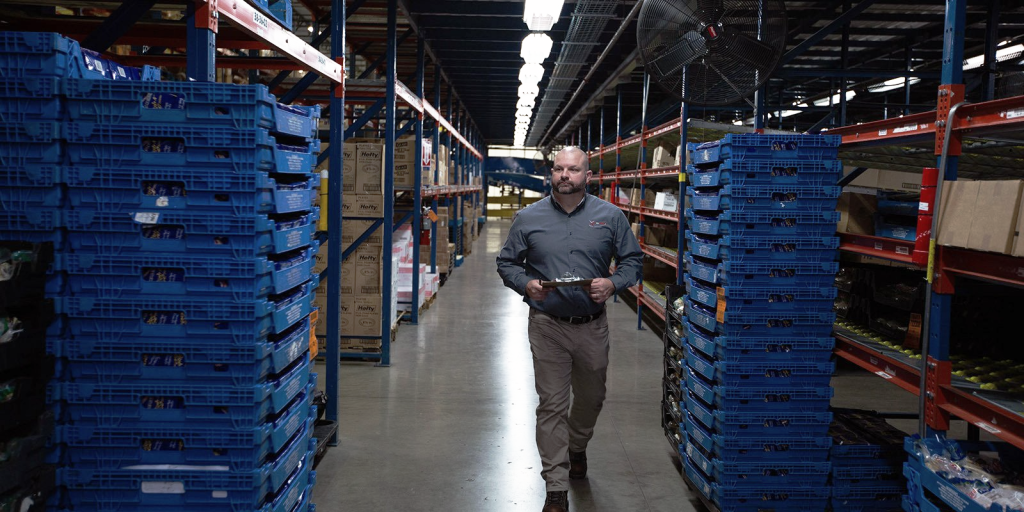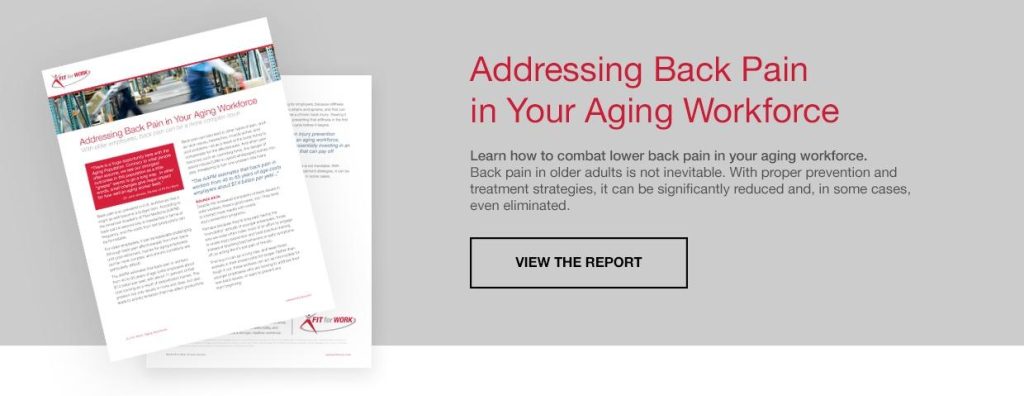By James Rethaber, Ph.D., CPE, LSSMBB
Vice President of Technical Operations, Fit For Work
In my spare time, I enjoy reading books about engineering failures involving structures such as bridges, buildings, vehicles, etc. I do not have a fascination with disasters, but I do have a fascination with learning and then applying what I’ve learned to other applicable scenarios/situations. In this case, the reason I enjoy reading about engineering failures is I personally learn more from failures (my own and from others) than I do from successes. I just finished reading To Forgive Design: Understanding Failure by Henry Petrosky and came across a phrase with a meaning I believe has application in the design of work, work processes, tools, equipment, etc., from a human-centric perspective.
The phrase that really captured my attention was “a factor of safety.” This phrase has different meanings in different countries, though. In some countries, “a factor of safety” means there is an increased risk due to a lack of safety consideration built into the design and construction of a structure or system. In other countries, “a factor of safety” means there is less of a risk due to increased safety considerations built into the design and construction of a structure or system. For this article, I will focus on the second “factor of safety” meaning which is characterized by engineers designing structures and systems to account for future considerations during the design phase to ensure increased safety for all users and participants of the structure or system.
A Factor of Safety
Structural engineers must know the strength of materials (i.e. steel beams, concrete, cables, etc.) when designing bridges to determine the load capacity of the bridge. This is accomplished by determining the breaking point of the materials. Even with the known breaking points of the materials involved in the construction of bridges, the engineers account for increased loads due to increased demands/traffic, potential increases in maximum loads of transport vehicles, emergency situations, inclement weather, and the structural fatigue/degradation of the materials with increased use, age, weather, etc.
How do structural engineers account for these variables? They include a Factor of Safety (FoS) built into the system/structure. The Factor of Safety (FoS) can be depicted with the following formula:
Factor of Safety = Yield Stress / Working Stress
- Yield Stress refers to the amount of stress the structure/system is designed to be able to withstand.
- Working Stress refers to the amount of stress the structure/system is required to withstand.
If a structure has a Yield Stress of 80,000 lbs. and a Working Stress of 80,000 lbs., the Factor of Safety is 1. This means the structure is at maximum capacity. If a structure has a Yield Stress of 160,000 lbs. and a Working Stress of 80,000 lbs., the Factor of Safety is 2. This means the structure is engineered to support twice the amount of weight it is currently exposed to, which increases the safety of the structure/system in its current and future states.
A Factor of Human Safety
So what does all of this have to do with designing work/work processes for human operators? Although humans have different “breaking points” due to individual variations and numerous other variables, the concept remains the same. How do we know we are engineering work and work processes that are designed to be safely performed by the working population? We can develop a Factor of Human Safety (FoHS) to accomplish the same results.
Here’s a theoretical formula for a Factor of Human Safety (FoHS):
Factor of Human Safety = Human Capacity / Work Demands
Human Capacity refers to the Yield Stress as described earlier. This is how much stress a human operator is “designed” to withstand. A common misconception is that the stresses placed on the operator are only physical. For this conceptual model, Human Capacity is the sum of the individual’s physical, mental/cognitive, and psychological (emotional/behavioral) aspects, which can be represented as:
Human Capacity = Physical + Mental/Cognitive + Psychological (Emotions & Behaviors)
Work Demands refers to the Working Stress as described above. This is how much stress a human operator is required to withstand as part of the work/work processes. Just like in the example above, if the Human Capacity and Work Demands are equal, the Factor of Human Safety is 1 and the human operator is at his/her maximum capacity.
This is where it gets tricky.
Unlike the Yield Stress for structures such as bridges and buildings, human yield stress or Human Capacity is extremely difficult to quantify and can fluctuate frequently and dramatically due to changes within physical, mental/cognitive, and/or psychological aspects.
For example, a human operator may have the physical capacity to perform the physical demands of the job, but if that person is going through a divorce, has a sick kid at home, just lost a loved one, just got yelled at by a coworker or supervisor, etc., the mental/cognitive aspects will probably be decreased/compromised, as will their emotional/behavioral components. This may result in the human operator working inefficiently, taking shortcuts, taking increased risks, etc. The person’s Human Capacity has now changed. With a rigid system, however, as Human Capacity changes quickly, the Work Demands do not, and this is where an uneven or non-optimized system places the human operator at risk for injury, as well as those around the person.
A Human-Centric Approach to A Factor of Human Safety
If we are unable to accurately quantify Human Capacity initially, how will we be able to accurately quantify Human Capacity as it fluctuates based on changes to the physical, mental/cognitive, and psychological aspects of the human operator? The answer is by addressing the physical, mental/cognitive, and psychological (emotions and behaviors) that comprise Human Capacity and then designing work and work processes, tools, and equipment to allow for changes in Human Capacity by decreasing the Work Demands.
Addressing Physical Aspects
To make effective and sustainable change, we should begin with knowing the job. This is accomplished by conducting a Physical Demands Analysis (PDA) which is a scientifically rigorous process designed to objectively and accurately quantify the physical requirements of the essential functions of the job. This includes all the manual material handling duties, as well as the positions and movements the person performs and the environment in which they are working, which may also impact the physical demands of the job.
Conducting an Ergonomic Risk Assessment (ERA) during this time is extremely valuable and effective since ergonomics-related risk factors increase the physical demands of the job. By identifying the risk factors and then designing, developing, implementing, and evaluating controls to reduce/eliminate the risk factors, the physical demands of the job are decreased, thus lowering the potential for and severity of work-related injury.
Taking this one step further, post-offer employment testing can be developed based on the results of the Physical Demands Analysis. Post-offer employment testing involves creating job-specific, simulated tasks to help determine whether or not the candidate can perform the physical requirements of the essential functions of the job.
This will also involve a musculoskeletal examination by a qualified professional to determine if the candidate has any pre-existing conditions that will warrant referral to a physician for medical clearance before the testing. This process will help identify their physical capabilities, is non-discriminatory, and is ADA/EEOC-compliant.
Addressing Mental/Cognitive Aspects
Whether or not work or a work process is mentally demanding is subjective, since what is difficult for one may be easy for another and vice versa. Instead of debating whether the work is mentally demanding or not, I recommend designing the work to match the mental/cognitive demands of the human operator.
Some human operators thrive in situations in which they must continuously think, problem-solve, and/or perform various tasks/activities while others do not. If you place the human operator who likes to think and problem-solve into a task that has little-to-no variety or complexity, you are setting the person and the entire system up for failure. The same holds true if you place a human operator who does not want to continuously problem-solve into a mentally/cognitively challenging situation. This may involve relocating human operators within various processes, but the time, effort, and energy spent doing this will help with optimizing the entire system.
Either way, non-value-added tasks that increase the potential for mental fatigue and the potential for confusion and errors should be eliminated. The layout and location of keys, buttons, levers, switches, etc., as well as their size, shape, and color on displays and/or control panels can make the work process less mentally demanding, as well. Best work practice training helps to reinforce the transfer of knowledge, while job coaching is extremely helpful in ensuring the human operator understands and can apply what was learned during their training.
Addressing Psychological (Emotional & Behavioral) Aspects
Emotions and behaviors are arguably just as important, if not more important, than the physical and mental capabilities of the human operator. If the human operator has the physical and mental “tools” to perform the job, but lacks the motivation, support, and psychological safety to perform the work, how effective do you believe they will be in their job? Increased on-the-job/on-the-floor presence is vital to providing these components. Psychological support can make the difference between successful outcomes and non-optimal outcomes.
For example, let’s look at two human operators. Operator A and Operator B possess similar physical and mental/cognitive capabilities.
- Operator A just lost a loved one and does not feel very appreciated at work.
- Operator B is recently married and feels very welcome and appreciated at work.
Both operators perform the same tasks throughout the day. Which operator do you believe is more likely to under-perform? Which operator do you believe is more likely to be injured at work? Which operator is more likely to quit without leaving notice, thus leaving the operations in a bind? The answer to all these questions is Operator A.
Taking Action
Including a Factor of Human Safety (FoHS) is a human-centric approach to designing work and work processes that will help to optimize the system, which will lead to the increased overall health, safety, and well-being of the human operator. If you are an engineer responsible for the design or redesign of work processes, here are some questions to ask yourself:
- Am I designing work processes to consider each operator may not be working at 100% maximum capacity from the beginning of the shift through the end of the shift?
- Am I designing work processes/production values based on the results of time motion studies that included the proper performance of tasks; i.e. no shortcuts, improper behaviors, increased risk taking, etc.?
- Am I designing work processes/production values based on the results of time motion studies collected at multiple times of the day; i.e. beginning of shift, mid-shift, and near the end of shift?
- Am I including adjustability in the design of the tools, equipment, workstations, etc. to account for individual variations of the employees who are currently employed, as well as future employees?
- Am I designing machinery that may automate or semi-automate work processes while also considering the human operator who will be operating, troubleshooting, repairing and/or performing preventative maintenance on the machine?
- Am I designing work processes with the physical, mental/cognitive, and psychological aspects accounted for?
If you answered “no” to any of those questions, the Factor of Human Safety (FoHS) will be decreased and will increase the potential for human operator risk, error, and injury. Beginning with a human-centric approach addressing the physical, mental/cognitive, and psychological (emotional & behavioral) aspects of the human operator will help to ensure the effectiveness and the sustainability of the optimized system.
Dr. James D. Rethaber, Ph.D., CPE, LSSMBB is the Director of the Ergonomics Division at Fit For Work an evidence-based occupational health & safety consulting organization headquartered in San Antonio, TX.





